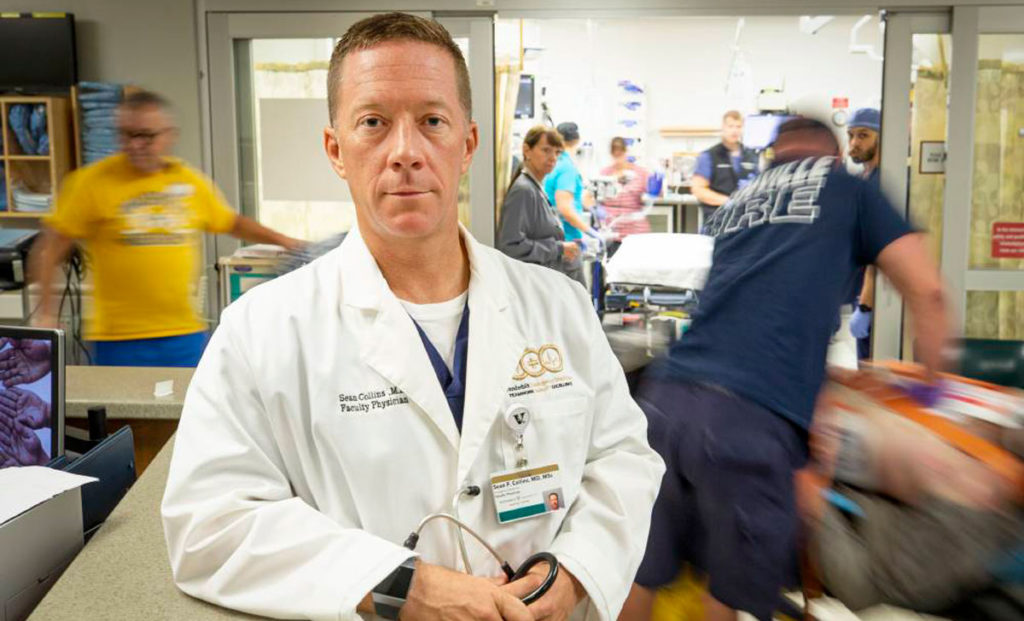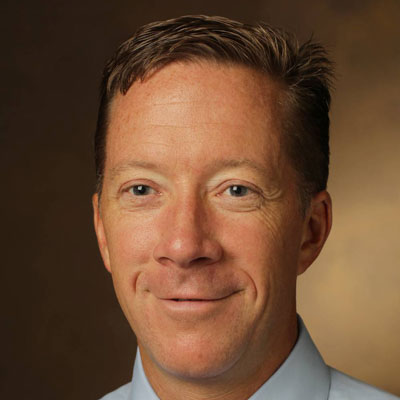At urban hospitals in the U.S., congested emergency departments (EDs) and long wait times can translate to an average of three extra hours of unrelieved symptoms for patients with acute heart failure (AHF). This finding emerged in a prospective global study of over 18,000 AHF patients across 358 sites in 44 countries. Sean Collins, M.D., professor of emergency medicine at Vanderbilt University Medical Center, was the co-primary investigator.
Collins sees this issue as symptomatic of a bigger problem for urban EDs across the country. “By looking at time to treatment of one of our most emergent conditions, we are seeing a microcosm of the overall problem we face in emergency rooms: we are overburdened and under-resourced.”
“Globally, time to treat is not typically the problem it is in the U.S.”
The study identified unmet needs in each region. While ED wait time is longest in the U.S., Collins said, “Globally, time to treat is not typically the problem it is in the U.S. The bigger global care deficits are in post-discharge access to doctors and in access to medications that improve symptoms and prolong life.”
Wait Times, Testing and Treatment
The researchers followed patients over a two-and-a-half year period. In some regions, like western Europe and southeastern Asia, AHF patients have quick access to treatment because ambulances have physicians on board to initiate care.
Providers in many countries don’t order tests that are considered a routine practice in the U.S., Collins said. “Our huge advantage is we have the best testing and therapies in the world. We’re doing unbelievable procedures, which is great. People are living longer with better medications. And you can have an MRI in two hours, versus six months in some systems.”
While U.S. health care reigns supreme in AHF treatment technology, the long ED wait time remains peculiar to our country, though the study found waiting did not impact relative mortality rates.
The U.S. also had an average hospital stay of four days compared to a much longer global average, which Collins said portends likely readmissions when dealing with AHF in the U.S. “Congested ERs are at the front end of the problem, exerting undue pressure on inpatient providers to discharge patients to make room for new admissions. In some situations, the discharge occurs before they are completely symptom-free, educated, and have follow-up care arranged. This creates a vicious cycle of hospital readmissions.”
“Congested ERs are at the front end of the problem, exerting undue pressure on inpatient providers to discharge patients to make room for new admissions.”
Congested EDs in the U.S.
Longer wait times in the U.S. are partly a casualty of population growth. Add to that an aging population, the mass migration of people from rural to urban settings and rural hospital closures, and the demand for urban EDs soon outpaces supply.
“All the U.S. centers in the study are experiencing these prolonged waits. Here in Nashville, we see that the infrastructure for highways and hospitals wasn’t built for the kind of influx of new residents we have experienced. It is straining our resources,” Collins said.
Over the past 20 years, per capita visits to EDs have increased by over 20 percent. Today, nearly half of all U.S. medical care is delivered by EDs. From Collins’ vantage point of over 20 years in emergency medicine, many systemic issues compound this by funneling patients who may not need emergency services but have few other options. “It’s not the patient’s fault, it’s the system’s. [Doctor’s offices often have] nine to five office hours, and people who work nights can’t get there during the day.”
Exploring Solutions
Relief would come from better aligning resources with patient acuity, Collins says, including rerouting some patients away from tertiary or quaternary hospitals to community hospitals. The availability of more 24-hour urgent care centers and active referrals to these centers would also relieve congestion. At Vanderbilt, many strategic efforts to better connect patients to the right level of care are occurring through the Vanderbilt Health Affiliated Network.
Collins plans to study the global cohort further, looking at sociodemographic variables, quality of life, medication adherence and outcomes one-year post-discharge. Mining this rich data source in future subanalyses will further define the strengths and shortfalls of the U.S. health care system and those across the globe.





